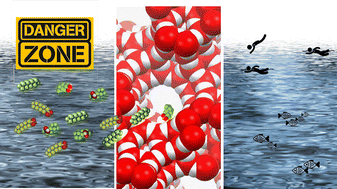High temperature behaviour of Ag-exchanged Y zeolites used for PFAS sequestration from water†
Abstract
Per- and polyfluorinated alkyl substances (PFAS) are anthropogenic compounds which have recently drawn great attention due to their high biological, chemical and physical stability and lipid/water repelling properties. The present work aims to provide for the first time insights on the thermal behaviour of Ag-exchanged Y zeolite loaded with perfluorooctanoic acid (PFOA, C8HF15O2) and perfluorooctane sulfonate (PFOS, C8HF17O3S) emphasizing the close link between crystal structure and desorption/dehydration processes. Elemental and isotopic abundance of carbon analysis, thermal analysis, and in situ high-temperature synchrotron X-ray powder diffraction were used to evaluate critically if the thermal regeneration affects the initial zeolites structural features. Rietveld refinements revealed that PFAS sites are emptied in the 550–650 °C temperature range, when the thermal degradation of PFOA and PFOS are reached. The crystallinity of the samples is not affected by the adsorption/desorption processes. Upon heating, the removal of both PFAS and coadsorbed water molecules induced a cation migration of the silver ions and changes of initial geometry of the framework. The dimensions of the channels remain comparable to those of the pristine materials thus suggesting the potential re-use of the samples in other adsorption PFAS cycles. Additionally, once regenerated and reloaded Ag-exchanged Y can re-adsorb PFAS in amounts comparable to that adsorbed in the first cycle with clear benefits on the costs of the whole water treatment process.

- This article is part of the themed collection: PFAS: cleaning up drinking water


 Please wait while we load your content...
Please wait while we load your content...